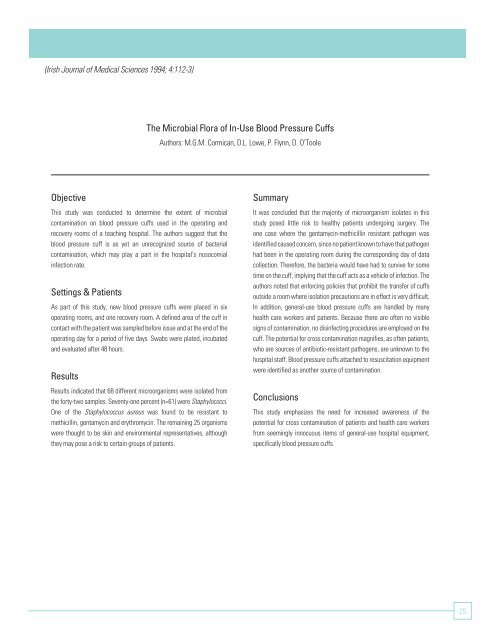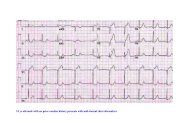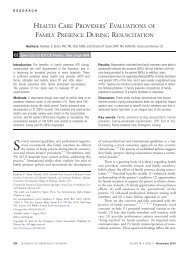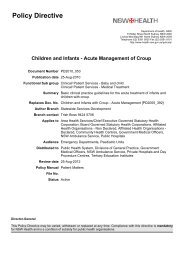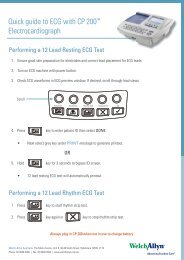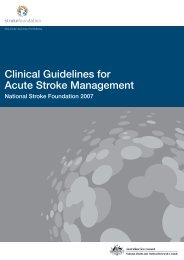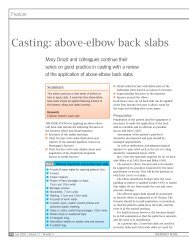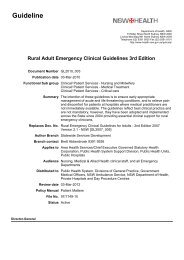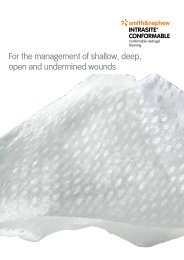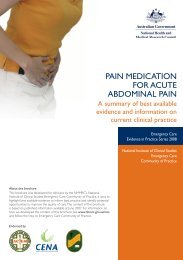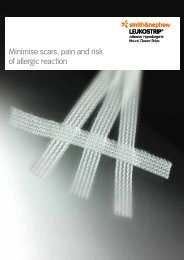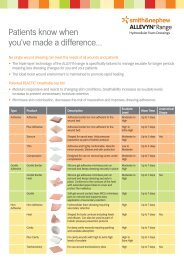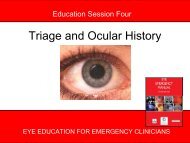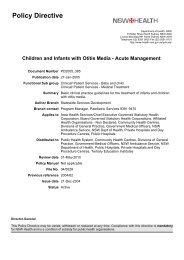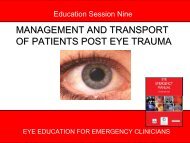Non Invasive Blood Pressure - Living on the EDge
Non Invasive Blood Pressure - Living on the EDge
Non Invasive Blood Pressure - Living on the EDge
You also want an ePaper? Increase the reach of your titles
YUMPU automatically turns print PDFs into web optimized ePapers that Google loves.
(Irish Journal of Medical Sciences 1994; 4:112-3)<br />
The Microbial Flora of In-Use <str<strong>on</strong>g>Blood</str<strong>on</strong>g> <str<strong>on</strong>g>Pressure</str<strong>on</strong>g> Cuffs<br />
Authors: M.G.M. Cormican, D.L. Lowe, P. Flynn, D. O’Toole<br />
Objective<br />
This study was c<strong>on</strong>ducted to determine <strong>the</strong> extent of microbial<br />
c<strong>on</strong>taminati<strong>on</strong> <strong>on</strong> blood pressure cuffs used in <strong>the</strong> operating and<br />
recovery rooms of a teaching hospital. The authors suggest that <strong>the</strong><br />
blood pressure cuff is as yet an unrecognized source of bacterial<br />
c<strong>on</strong>taminati<strong>on</strong>, which may play a part in <strong>the</strong> hospital’s nosocomial<br />
infecti<strong>on</strong> rate.<br />
Settings & Patients<br />
As part of this study, new blood pressure cuffs were placed in six<br />
operating rooms, and <strong>on</strong>e recovery room. A defined area of <strong>the</strong> cuff in<br />
c<strong>on</strong>tact with <strong>the</strong> patient was sampled before issue and at <strong>the</strong> end of <strong>the</strong><br />
operating day for a period of five days. Swabs were plated, incubated<br />
and evaluated after 48 hours.<br />
Results<br />
Results indicated that 68 different microorganisms were isolated from<br />
<strong>the</strong> forty-two samples. Seventy-<strong>on</strong>e percent (n=61) were Staphylococci.<br />
One of <strong>the</strong> Staphylococcus aureus was found to be resistant to<br />
methicillin, gentamycin and erythromycin. The remaining 25 organisms<br />
were thought to be skin and envir<strong>on</strong>mental representatives, although<br />
<strong>the</strong>y may pose a risk to certain groups of patients.<br />
Summary<br />
It was c<strong>on</strong>cluded that <strong>the</strong> majority of microorganism isolates in this<br />
study posed little risk to healthy patients undergoing surgery. The<br />
<strong>on</strong>e case where <strong>the</strong> gentamycin-methicillin resistant pathogen was<br />
identified caused c<strong>on</strong>cern, since no patient known to have that pathogen<br />
had been in <strong>the</strong> operating room during <strong>the</strong> corresp<strong>on</strong>ding day of data<br />
collecti<strong>on</strong>. Therefore, <strong>the</strong> bacteria would have had to survive for some<br />
time <strong>on</strong> <strong>the</strong> cuff, implying that <strong>the</strong> cuff acts as a vehicle of infecti<strong>on</strong>. The<br />
authors noted that enforcing policies that prohibit <strong>the</strong> transfer of cuffs<br />
outside a room where isolati<strong>on</strong> precauti<strong>on</strong>s are in effect is very difficult.<br />
In additi<strong>on</strong>, general-use blood pressure cuffs are handled by many<br />
health care workers and patients. Because <strong>the</strong>re are often no visible<br />
signs of c<strong>on</strong>taminati<strong>on</strong>, no disinfecting procedures are employed <strong>on</strong> <strong>the</strong><br />
cuff. The potential for cross c<strong>on</strong>taminati<strong>on</strong> magnifies, as often patients,<br />
who are sources of antibiotic-resistant pathogens, are unknown to <strong>the</strong><br />
hospital staff. <str<strong>on</strong>g>Blood</str<strong>on</strong>g> pressure cuffs attached to resuscitati<strong>on</strong> equipment<br />
were identified as ano<strong>the</strong>r source of c<strong>on</strong>taminati<strong>on</strong>.<br />
C<strong>on</strong>clusi<strong>on</strong>s<br />
This study emphasizes <strong>the</strong> need for increased awareness of <strong>the</strong><br />
potential for cross c<strong>on</strong>taminati<strong>on</strong> of patients and health care workers<br />
from seemingly innocuous items of general-use hospital equipment,<br />
specifically blood pressure cuffs.<br />
25<br />
SM4002 ICT4ECR.indd 25<br />
3/30/09 3:19:33 PM


